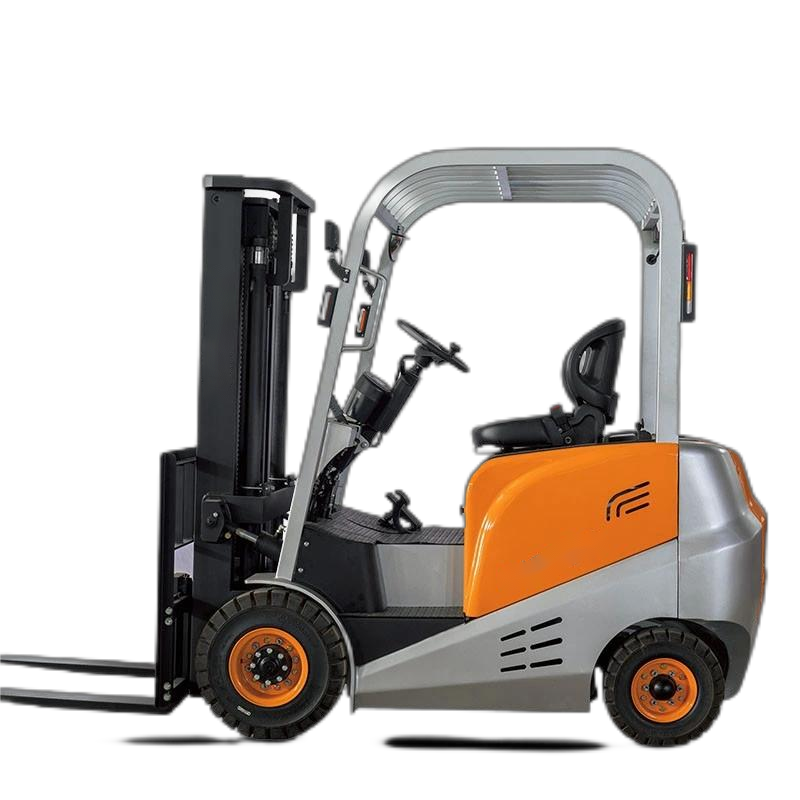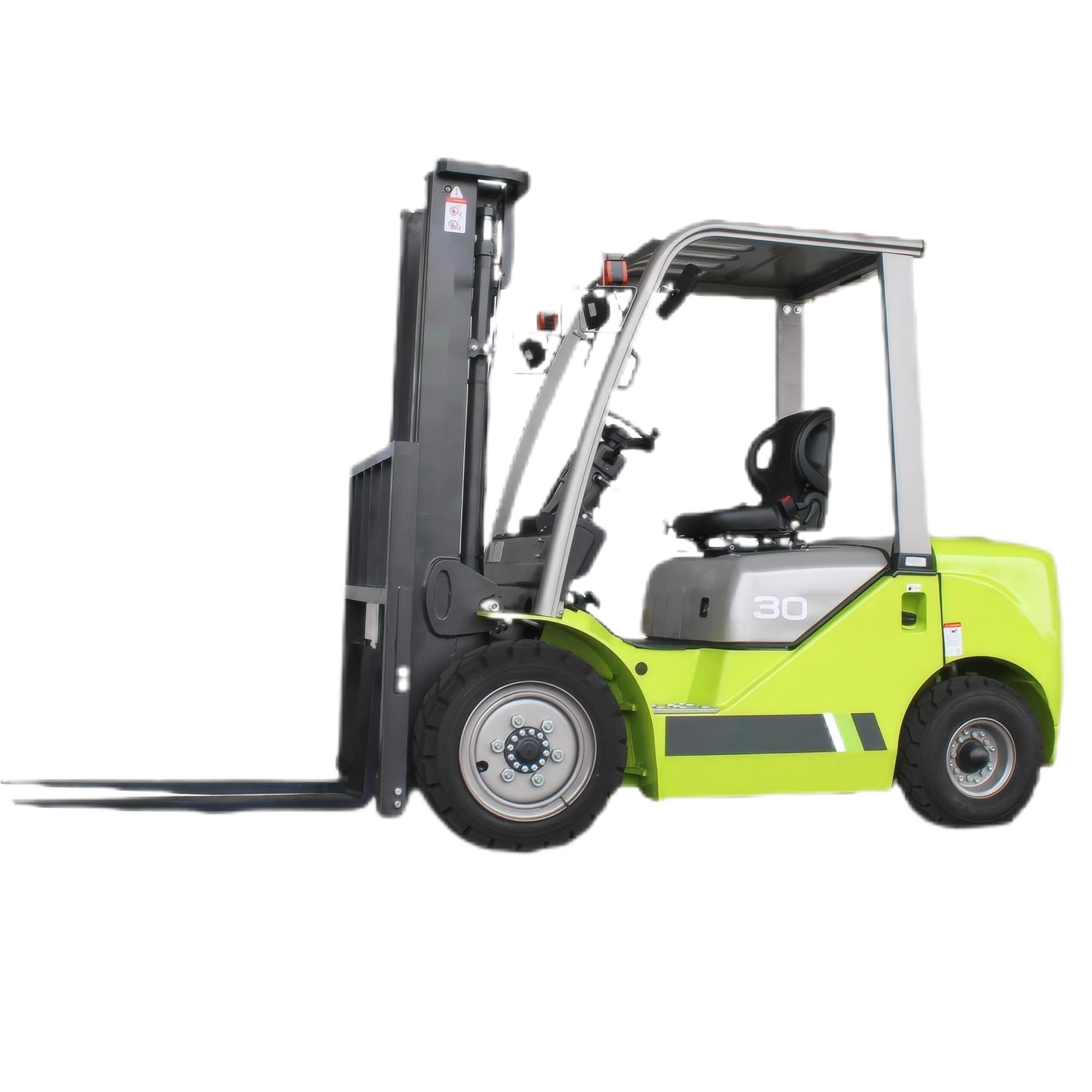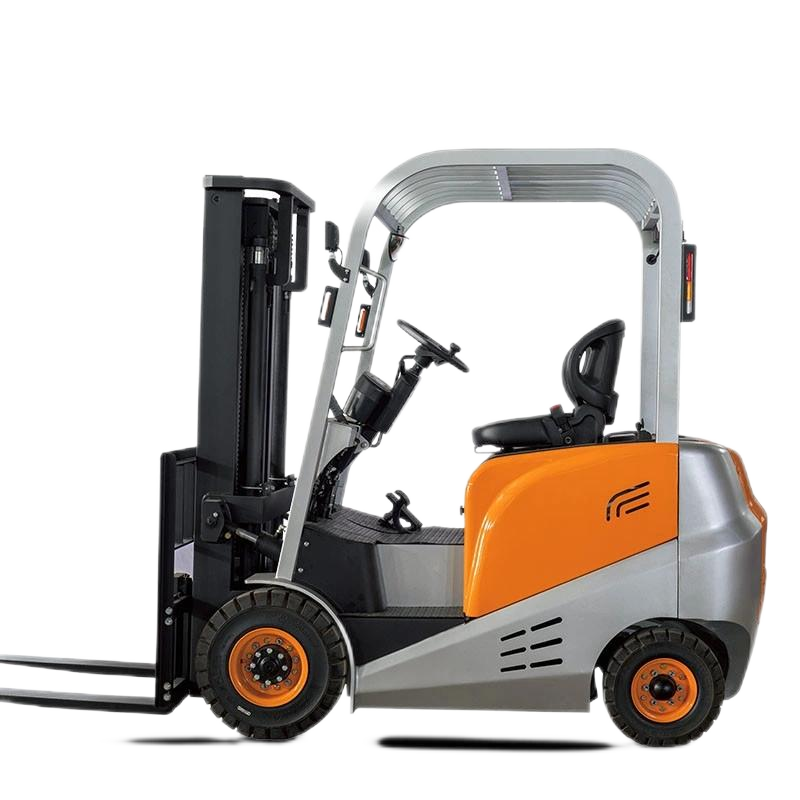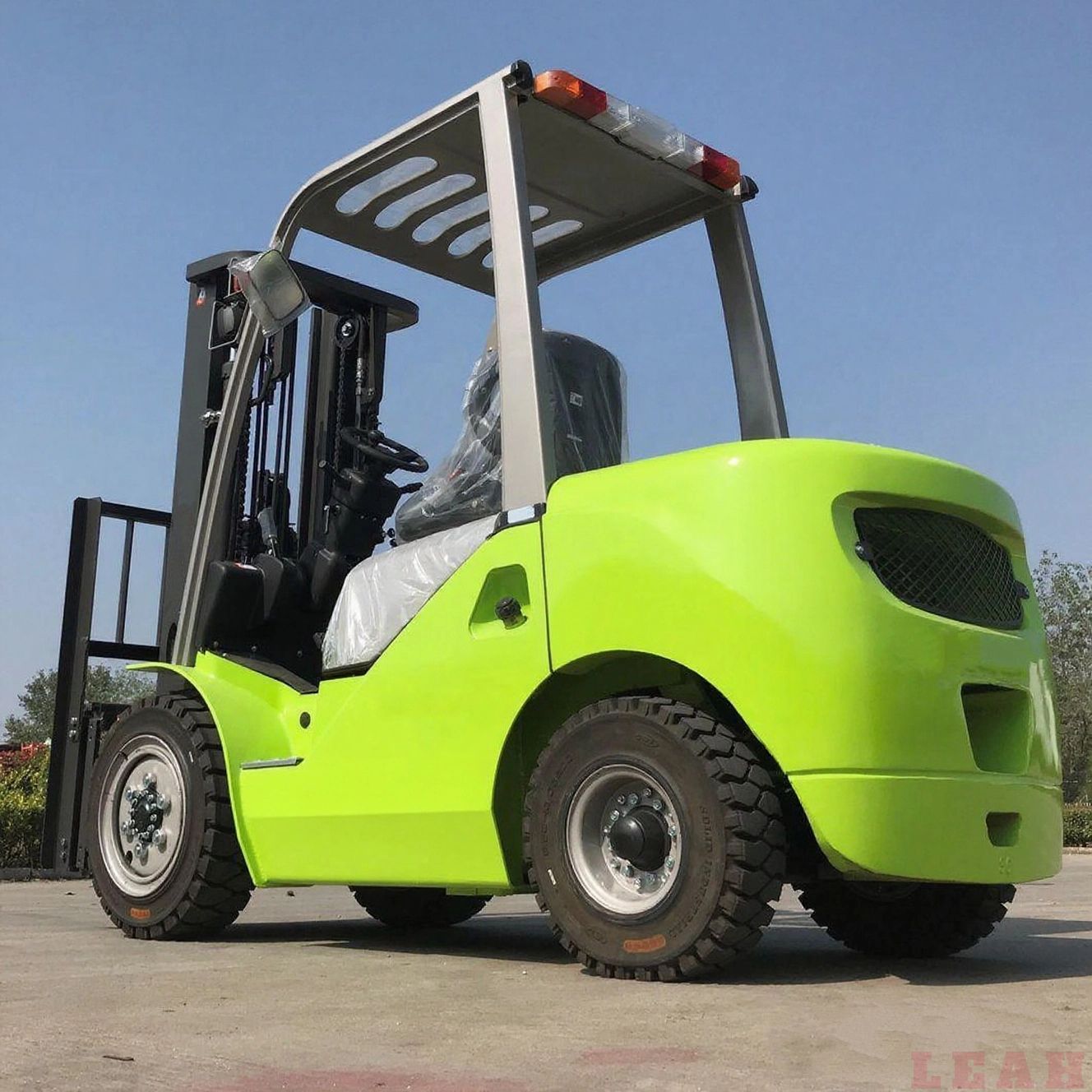The following is the relevant introduction about the 5-ton electric forklift:
Performance Characteristics
Environmentally friendly and energy-saving: Using a storage battery as the power source, there is no exhaust gas emission during operation, causing no pollution to the environment. Moreover, it has a low noise level and can be used in indoor places with high environmental requirements, such as warehouses and workshops. It can also reduce the noise pollution for operators.
Low maintenance cost: Compared with internal combustion forklifts, the mechanical structure of electric forklifts is relatively simple. There are no complex components such as engines and transmissions, reducing the probability of many mechanical failures. Daily maintenance mainly focuses on aspects such as the battery, motor, and electronic control system, and the maintenance cost is relatively low.

Easy to operate: It adopts electrical signal control for the electric steering system, acceleration control system, hydraulic control system, and braking system. Operators can easily complete actions such as the forklift's forward movement, backward movement, turning, lifting, and lowering through the joystick and buttons. The operation intensity is low, and the work efficiency is high.
Environmentally friendly and energy-saving: Using a storage battery as the power source, there is no exhaust gas emission during operation, causing no pollution to the environment. Moreover, it has a low noise level and can be used in indoor places with high environmental requirements, such as warehouses and workshops. It can also reduce the noise pollution for operators.
Low maintenance cost: Compared with internal combustion forklifts, the mechanical structure of electric forklifts is relatively simple. There are no complex components such as engines and transmissions, reducing the probability of many mechanical failures. Daily maintenance mainly focuses on aspects such as the battery, motor, and electronic control system, and the maintenance cost is relatively low.
Main Components
Battery: It is the power source of the electric forklift. Generally, large-capacity lead-acid batteries or lithium batteries are used. Lithium batteries have a higher energy density, faster charging speed, and a longer service life, but their prices are relatively high; lead-acid batteries are more affordable, have mature technology, and are widely used.
Motor: It includes the drive motor and the hydraulic motor. The drive motor is responsible for driving the forklift to move and provides the power for forward and backward movement; the hydraulic motor is used to drive the hydraulic system to achieve actions such as lifting, lowering, and tilting of the goods.
Electronic control system: It is the "brain" of the electric forklift, mainly composed of components such as controllers, contactors, and relays. It is used to control the running speed and direction of the motor and the pressure and flow rate of the hydraulic system, realizing various operation functions of the forklift, and monitoring and protecting the running status of the forklift.
Hydraulic system: It is composed of components such as oil pumps, cylinders, oil pipes, and hydraulic valves. Through the pressure transmission of hydraulic oil, it converts the mechanical energy of the motor into hydraulic energy to achieve actions such as lifting, lowering, and tilting of the goods. The hydraulic system is required to have good sealing performance and stability to ensure the work efficiency and safety of the forklift.
Mast: It is usually composed of an outer mast, an inner mast, a fork carriage, chains, sprockets, etc. It is the main working device of the forklift for picking up and lifting goods. Parameters such as the lifting height and inclination angle of the mast will affect the working range and efficiency of the forklift.
Battery: It is the power source of the electric forklift. Generally, large-capacity lead-acid batteries or lithium batteries are used. Lithium batteries have a higher energy density, faster charging speed, and a longer service life, but their prices are relatively high; lead-acid batteries are more affordable, have mature technology, and are widely used.
Motor: It includes the drive motor and the hydraulic motor. The drive motor is responsible for driving the forklift to move and provides the power for forward and backward movement; the hydraulic motor is used to drive the hydraulic system to achieve actions such as lifting, lowering, and tilting of the goods.
Electronic control system: It is the "brain" of the electric forklift, mainly composed of components such as controllers, contactors, and relays. It is used to control the running speed and direction of the motor and the pressure and flow rate of the hydraulic system, realizing various operation functions of the forklift, and monitoring and protecting the running status of the forklift.
Hydraulic system: It is composed of components such as oil pumps, cylinders, oil pipes, and hydraulic valves. Through the pressure transmission of hydraulic oil, it converts the mechanical energy of the motor into hydraulic energy to achieve actions such as lifting, lowering, and tilting of the goods. The hydraulic system is required to have good sealing performance and stability to ensure the work efficiency and safety of the forklift.
Mast: It is usually composed of an outer mast, an inner mast, a fork carriage, chains, sprockets, etc. It is the main working device of the forklift for picking up and lifting goods. Parameters such as the lifting height and inclination angle of the mast will affect the working range and efficiency of the forklift.
Application Scenarios
Warehouse logistics: In the warehouse, the 5-ton electric forklift can be used for loading, unloading, handling, and stacking operations of goods. It can quickly unload goods from trucks and move them to the designated storage locations, or take out goods from the storage locations and load them onto trucks, improving the logistics efficiency of the warehouse.
Factory workshop: Inside the factory, it is used for the handling of raw materials, the turnover of semi-finished products and finished products, etc. It can transport materials between different production workstations to ensure the continuity of production.
Port terminal: It can be used for the loading, unloading, and short-distance handling of containers, as well as the stacking and transfer of goods in port warehouses. Its environmentally friendly and energy-saving characteristics also meet the environmental requirements of the port.
Logistics distribution center: As an important handling device in the logistics distribution center, it can efficiently classify, sort, and handle various goods, meeting the needs of the logistics distribution center for the rapid circulation of goods.
Warehouse logistics: In the warehouse, the 5-ton electric forklift can be used for loading, unloading, handling, and stacking operations of goods. It can quickly unload goods from trucks and move them to the designated storage locations, or take out goods from the storage locations and load them onto trucks, improving the logistics efficiency of the warehouse.
Factory workshop: Inside the factory, it is used for the handling of raw materials, the turnover of semi-finished products and finished products, etc. It can transport materials between different production workstations to ensure the continuity of production.
Port terminal: It can be used for the loading, unloading, and short-distance handling of containers, as well as the stacking and transfer of goods in port warehouses. Its environmentally friendly and energy-saving characteristics also meet the environmental requirements of the port.
Logistics distribution center: As an important handling device in the logistics distribution center, it can efficiently classify, sort, and handle various goods, meeting the needs of the logistics distribution center for the rapid circulation of goods.







